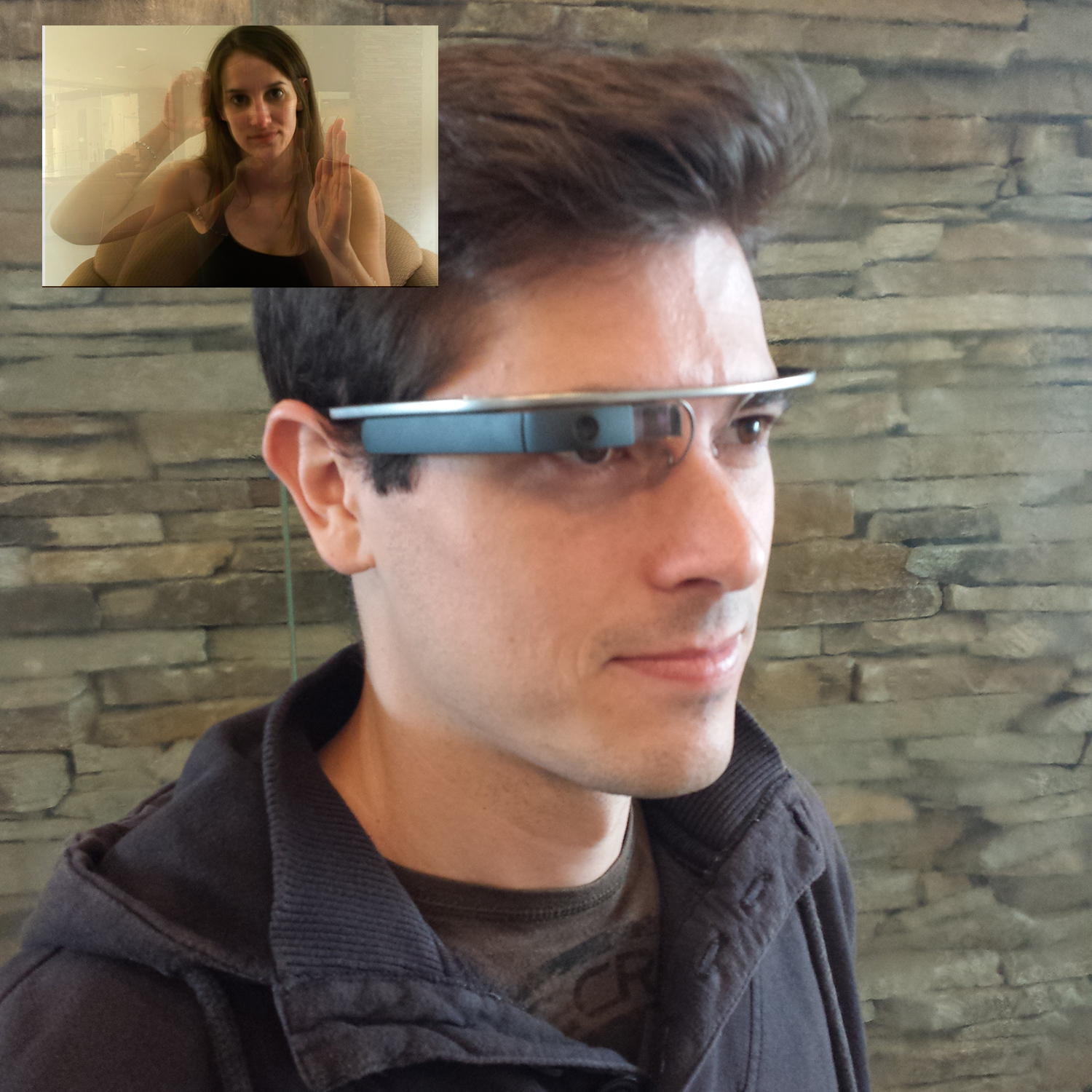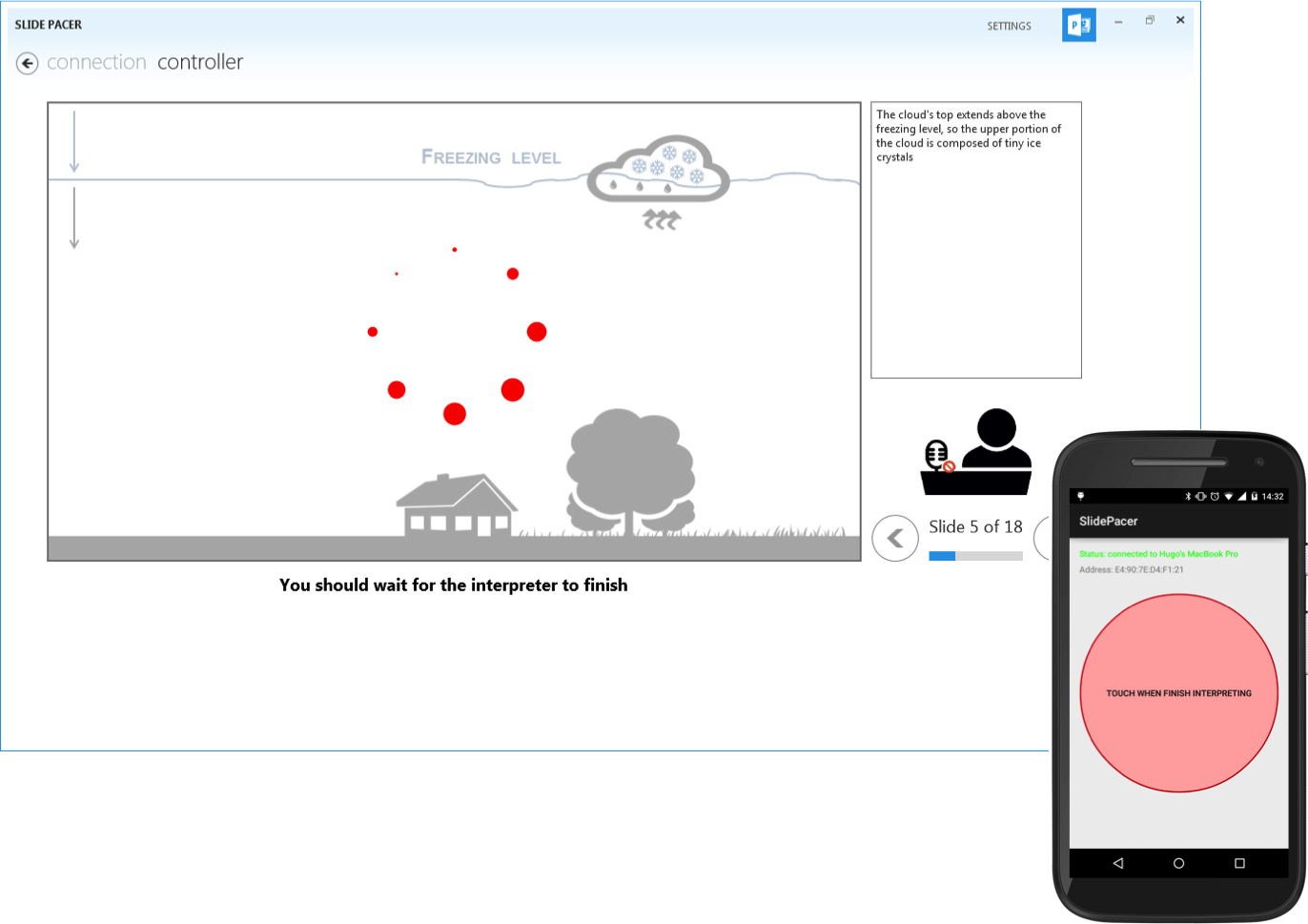Following multimedia lectures in mainstream classrooms is challenging for deaf and hard-of-hearing (DHH) students, even when provided with accessibility services. Due to multiple visual sources of information (e.g. teacher, slides, interpreter), these students struggle to divide their attention among several simultaneous sources, which may result in missing important parts of the lecture; as a result, access to information is limited in comparison to their hearing peers, having a negative effect in their academic achievements.
This project explores two main approaches: 1) providing tools for instructor of DHH students for better delivery of multimedia lectures and 2) use eyewear computers to reduce visual dispersion and increase access to information.
Project Details
Title: Accessible Classrooms for Deaf and Hard of Hearing
Date: Jan 1, 2017
Authors: Hugo Nicolau, Alessandra Brandão, Shreya Tadas, Vicki L. Hanson
Keywords: deaf and hard of hearing, classroom, accessibility, multimedia, attention, presentation, learning
Related Publications
- Inclusive Computational Thinking in Public Schools: A Case Study from Lisbon
- Ana Cristina Pires, Filipa Rocha, Tiago Guerreiro, and Hugo Nicolau. 2024. Inclusive Computational Thinking in Public Schools: A Case Study from Lisbon. Interactions 31, 4: 32–37. http://doi.org/10.1145/3665992
- [PDF] [LIBRARY]
- The Use of Smart Glasses for Lecture Comprehension by Deaf and Hard of Hearing Students
- Ashley Miller, Joan Malasig, Brenda Castro, Vicki L. Hanson, Hugo Nicolau, and Alessandra Brandão. 2017. The Use of Smart Glasses for Lecture Comprehension by Deaf and Hard of Hearing Students. CHI ’17 Extended Abstracts on Human Factors in Computing Systems, ACM.
- [ABSTRACT] [PDF]
Deaf and hard of hearing students must constantly switch between several visual sources to gather all necessary information during a classroom lecture (e.g., instructor, slides, sign language interpreter or captioning). Using smart glasses, this research tested a potential means to reduce the effects of visual field switches, proposing that consolidating sources into a single display may improve lecture comprehension. Results showed no statistically significant comprehension improvements with the glasses, but interviews indicated that participants found it easier to follow the lecture with glasses and saw the potential for them in the classroom. Future work highlights priorities for smart glasses consideration and new research directions.
- SlidePacer: A Presentation Delivery Tool for Instructors of Deaf and Hard of Hearing Students
- Alessandra Brandão, Hugo Nicolau, Shreya Tadas, and Vicki L. Hanson. 2016. SlidePacer: A Presentation Delivery Tool for Instructors of Deaf and Hard of Hearing Students. Proceedings of the 18th International ACM SIGACCESS Conference on Computers and Accessibility, ACM, 25–32. http://doi.org/10.1145/2982142.2982177
- [ABSTRACT] [PDF] [LIBRARY]
Following multimedia lectures in mainstream classrooms is challenging for deaf and hard-of-hearing (DHH) students, even when provided with accessibility services. Due to multiple visual sources of information (e.g. teacher, slides, interpreter), these students struggle to divide their attention among several simultaneous sources, which may result in missing important parts of the lecture; as a result, access to information is limited in comparison to their hearing peers, having a negative effect in their academic achievements. In this paper we propose a novel approach to improve classroom accessibility, which focuses on improving the delivery of multimedia lectures. We introduce SlidePacer, a tool that promotes coordination between instructors and sign language interpreters, creating a single instructional unit and synchronizing verbal and visual information sources. We conducted a user study with 60 participants on the effects of SlidePacer in terms of learning performance and gaze behaviors. Results show that SlidePacer is effective in providing increased access to multimedia information; however, we did not find significant improvements in learning performance. We finish by discussing our results and limitations of our user study, and suggest future research avenues that build on these insights.

